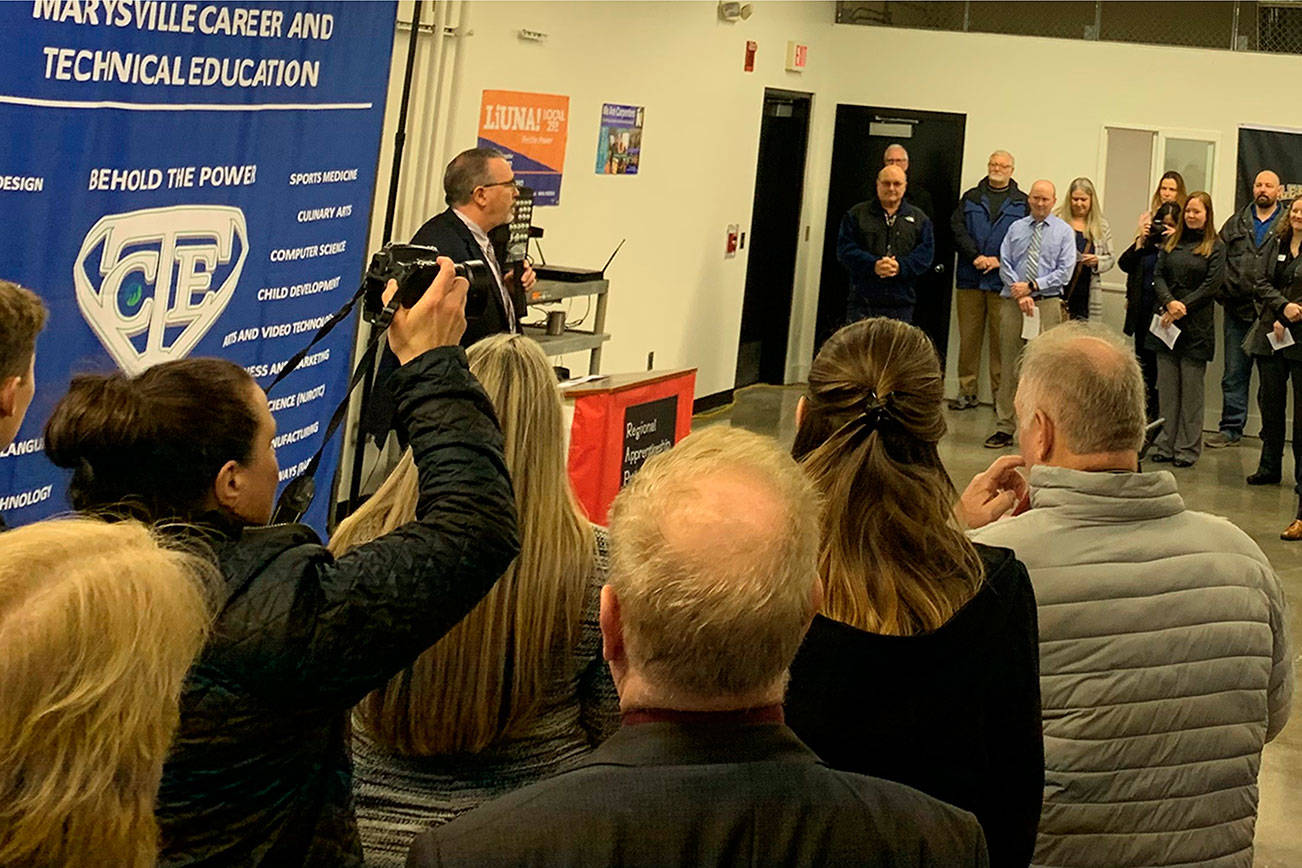MARYSVILLE – The statistics are alarming.
More Native Americans in the Marysville School District are dropping out of school, 47.5 percent, than graduating 35.6 percent.
For blacks, the dropout race is 35 percent and hispanics 21.1 percent. Boys drop out at a 20.1 percent clip, compared with girls at 16.5 percent.
Compare that to the Sunnyside School District, where 10.8 percent of whites and 9.2 percent of hispanics drop out. For boys it’s 11.6 percent and girls 6.9 percent.
That’s just some of the startling information district leaders are looking at in trying to figure out how to better educate Marysville’s young people.
The district is looking at changing to trimesters with students having five classes a day. The main reason is the state is changing its graduation requirement to 24 credits with the freshman class this year. At a recent school board meeting, Rod Merrell, director of secondary education, said only 38 percent of districts in the state offer 24 or more credits. That creates an unfair gap. It also means that statewide 26.1 percent of 9th-graders are not on schedule to graduate on time. In Marysville, the number is an incredible 45.5 percent.
Of freshmen passing all their classes, Asians are at the high end at 81.6 percent 21.6 Native Americans are at the low end at 21.6 percent. When it comes to sex, 60.8 percent of freshmen passing are girls with 48.1 percent boys.
But getting the 24 credits and graduating are only two things the MSD is studying. In a nutshell, Merrell said changes need to allow for remediation, exploration and acceleration.
The district wants any changes in scheduling to:
•Help students get college and career ready.
•Offer enriching electives and equal access.
•Offer time for intervention to help students.
•Allow room for error and collaboration.
•Stress project-based learning.
Merrell said trimesters would allow for more courses, better variety, more time for high-quality in-depth learning, fewer preps for teachers, changing class less often and fail-recovery options.
Merrell said because of a lack of variety in classes now, “We’re losing a lot of kids to Running Start.”
Regarding scheduling, he said: “We can make the bells ring at any time we want. But unless we change we’ll get the same results.”
He said the MSD set up a committee a few years ago to study what changes needed to be made to meet the 24-credit requirement. “There’s no wiggle room” for a student to fail a class, Merrell said of the current structure. “Kids pretty quickly become credit deficient, and your on-time graduation rate goes down.”
After a year of study, the panel recommended a trimester system.
The change wasn’t made because of a number of reasons, the McCleary decision, the former superintendent leaving, etc.
“It was a perfect storm of all those competing factors,” Merrell said.
He added that the MSD graduation rate already needs to improve, and if a change isn’t made it likely would get worse.
As for what the Sunnyside district is doing to be so successful, Merrell said switching to trimesters was part of the reason. “They build intervention into the school day, so if a students gets off track they look for ways to get them back on track through credit retrieval,” he said.
Merrell said that is important, especially for kids living in poverty. Students who have support systems can make up credits after school or during summer. But kids in poverty may have to babysit or even work to help the family pay the bills. They need support during school.
Also at Sunnyside, students are monitored at three levels, depending on if they are on track with credits and have passed state testing. “And they have a support model for all three,” Merrell said.
Another model allows students who fail a class to take another one, but be allowed to make up work from the previous one to get both credits.
Before any change, a final decision needs to be made, it needs to be communicated to the community, a work group would need to be formed and professional development would need to take place for teachers to plan for longer periods, he said, adding he hopes the change could be made for the 2020-21 school year.
Issues with RAP
Meanwhile, there was also a lengthy discussion about the Regional Apprentice Pathway.
Concern was expressed because even though $1.5 million is coming to the district over the next two years for the trades curriculum from the legislature, no money was put in the state budget to fix up the former wood shop at Marysville-Pilchuck High School, which could cost from $1 million to $2 million depending on how much the program wants to offer. A leaky roof and dry rot are just some of the basic problems.
Snohomish County is pitching in $200,000 for the program.
There was also concern on if the program will be able to start this fall. Finding an alternative site was mentioned.
“The building won’t fix itself,” director Pete Lundberg said.
County Councilman Nate Nehring said the building costs were not anticipated. “Our understanding was the building was ready to use.” Superintendent Jason Thompson added, “We’re not going to take money out of our budget to make it go.”
One idea was to fix the building as cheaply as possible, then let the trades students themselves make the improvements. “We could ask the stakeholders for one-time donations,” Nehring said, referring to the trades groups who are partnering with the district in hopes of getting more-qualified employees in the future.
“We need to look at all of the solutions we can,” finance director Mike Sullivan said.
Merrell said 51 percent of Marysville grads go on to college with 34 percent getting bachelor’s degrees and 12.7 percent getting advanced degrees.
Statistics show the more education the better the salary, but even those with BA’s barely make a living wage in Snohomish County because the cost of living is so high. He recommended trades pathways for some students.
“Some of the fields pay better than a four-year degree,” he said, unless a person has 10 years of work experience.
During the public comment period at the meeting, complaints were brought up about the trimester concept, poor customer service at the district and bullying.
It was also announced that the district will not be laying off teachers, as is the case in some other districts.
Graduates to dropouts
Asian 81.6% to 10.2%
White 80% to 12.9%
Two or more races 74.1% to 21%
Hispanic 69.9% to 21.2%
Black 60% TO 35%
Native American 35.6% to 47.5%
Female 75.4% to 16.5%
Male 72.1% to 20.1%







